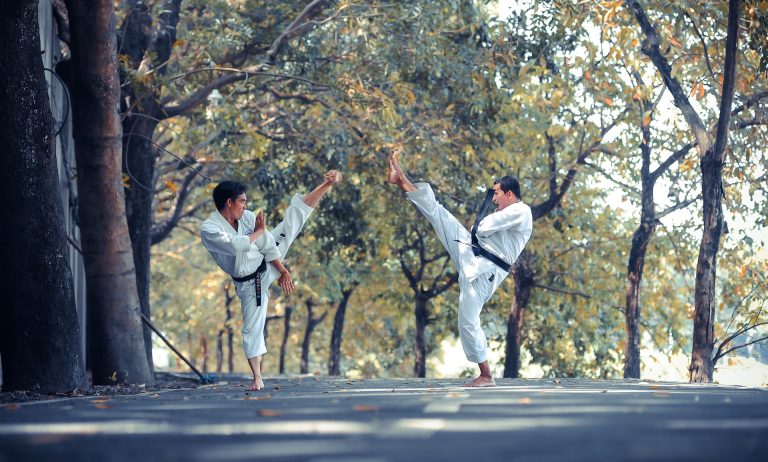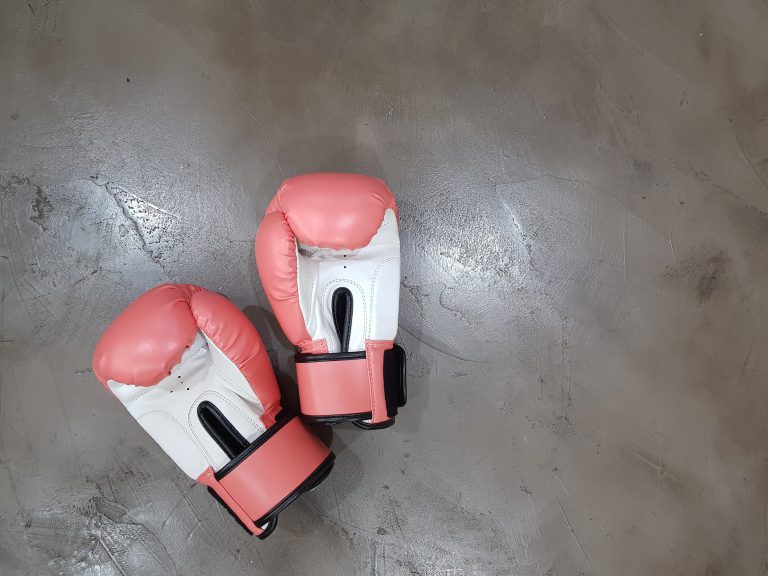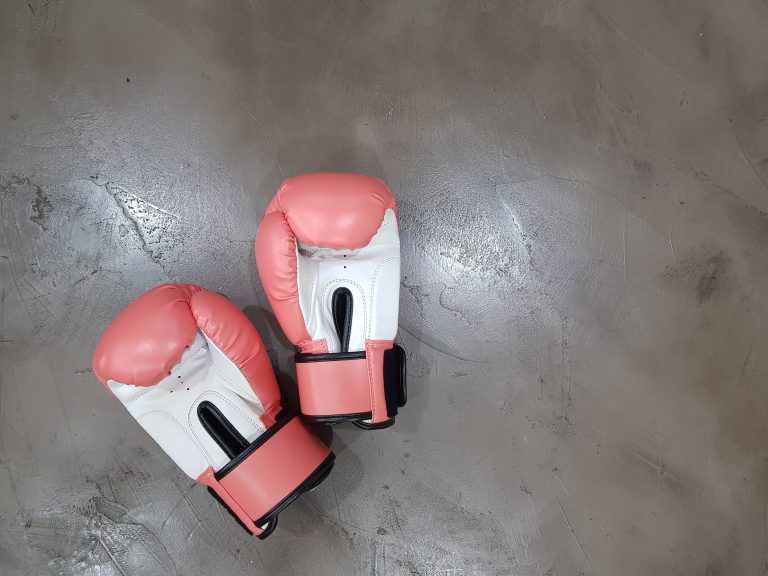Karate Belt Colours in the UK – A Comprehensive Guide
Karate is a popular martial art that originated in Japan and has now spread to countries all around the world. One of the most iconic aspects of karate is its colored belts. Karate belts are a way to signify and recognize the progress and skill level of a student. In this article, we will explain the meaning of the different karate belt colors in the UK.
Understanding the Belt System in Karate
The belt system in karate is designed to indicate a student’s level of skill and experience. From white to black, there are a lot of variations in color, each having their unique meaning. Each belt color represents a set of requirements which a student needs to fulfill before moving up to the next level. These requirements involve techniques, forms, and self-defense moves.
In the UK, the karate belt system tends to follow the standards set by the Japan Karate Association (JKA) to maintain uniformity across the globe. Now, let’s delve into the meanings of the different belt colors.
White Belt
The white belt is the starting level in karate, indicating a beginner’s skill level. It represents an empty canvas and the willingness to learn the basics. New students wear the white belt until they pass their first grading exam. During this time, they focus on learning the basic techniques of karate like blocks, strikes, kicks, and stances.
Yellow Belt
After the white belt, the next step is the yellow belt. It represents the first stage of progress and indicates the student’s initial understanding of the basics. During this phase, the student focuses on mastering the basic techniques and kicks. Achieving this level takes dedication and hard work, and students must showcase their skills during grading exams to pass.
Orange Belt
The orange belt represents improvement and a more thorough understanding of karate. By this level, students have learned intermediate-level techniques like foot sweeps, throws, and more complicated combinations. Regular practice and repetition hone the skills of the student at this stage.
Green Belt
The green belt is an advancement from the previous stage, indicating significant improvements in the student’s understanding of karate. At this level, students practice advanced techniques and combinations that require speed, precision, and power. The green belt level acknowledges their hard work and dedication to learning the craft of karate.
Blue Belt
The blue belt represents progress toward the intermediate level. Students at this stage have polished their basics and now focus on learning higher-level techniques like spinning kicks and jumping kicks. A lot of other martial arts disciplines have different belt colours, so it is essential to distinguish the belt system for karate in the UK, which may be different in other regions.
Purple Belt
The purple belt is a step closer to the advanced level in which students start putting effort into developing their individual style. At this level, students explore innovative techniques and combinations that allow them to stand out in the field of karate. Advanced techniques like joint locks, pressure points, and takedowns are also commonly introduced at this stage.
Brown Belt
The brown belt indicates the student’s journey from an intermediate level to an advanced level. Students at this stage must demonstrate their profound understanding of karate by incorporating innovative techniques and tactics during sparring practice. It is a stage that requires a lot of perseverance, focus, and dedication.
Black Belt
The black belt is an indication of the mastery level in karate. It represents the stage at which a student has devoted years of practice, overcoming obstacles and facing new challenges. Reaching the black belt level requires expertise in various techniques, skills as well as embodying the principles of karate.
FAQs About Karate Belt Colors in the UK
Karate is a popular martial art which originated in Japan and has spread around the world. One of the most recognizable aspects of karate is the colored belt system, which indicates the level of expertise of the practitioner. If you are new to karate, or even if you have been practicing for some time, you may have questions about the meaning of the different belt colors. In this guide, we will answer the most frequently asked questions about karate belt colors in the UK.
What do the different karate belt colors mean?
Each belt color represents a certain level of proficiency in karate. The order of the colors varies between schools, but generally, the progression is as follows:
White -> Yellow -> Orange -> Green -> Blue -> Brown -> Black
White represents a beginner who is just starting to learn karate. As the student progresses, they will advance through the different colors until they achieve the coveted black belt.
How long does it take to earn each belt level?
The time it takes to earn each belt level varies from student to student and from school to school. On average, it can take between one and three years to progress to the next belt color. However, this depends on the frequency of the classes, the student’s dedication, and the requirements of the school.
Can I skip a belt level?
It is possible to skip a belt level, but this depends on the school’s policies. Some schools may allow students to skip a belt level if they demonstrate exceptional skill and knowledge of karate. However, most schools require students to earn each belt level in sequence, as this ensures that they have mastered the fundamental techniques before moving on to more advanced ones.
What if I fail my belt exam?
Failing a belt exam can be disappointing, but it is not the end of the world. Most schools allow students to retake the exam after a certain period of time, usually a few months. During this time, the student can work on improving their technique and knowledge of karate. It is important to remember that failure is a natural part of the learning process, and that perseverance is key to achieving success in martial arts.
What happens when I earn my black belt?
Achieving a black belt is a significant accomplishment in karate. It indicates that the practitioner has achieved a high level of proficiency and mastery of the art. However, earning a black belt does not mean that the student has reached the end of their journey. In fact, many practitioners view earning a black belt as just the beginning of a new chapter in their martial arts journey.
What is the significance of the black belt?
The black belt is a symbol of mastery and excellence in karate. It represents years of dedication, hard work, and practice. However, it is important to note that the black belt is not the ultimate goal of karate. Rather, it is a symbol of the practitioner’s commitment to continuous improvement and lifelong learning.
How to Understand the Karate Belt Colors in the UK
Karate is a popular sport and martial art that originated in Okinawa, Japan. It’s known for its signature moves like punches, kicks, and knee strikes. However, what makes karate more interesting is its grading system based on different belt colors.
In the UK, many karate practitioners aspire to reach the topmost level of the art form. However, before one can become a black belt, it’s essential to understand the meaning of karate belt colors.
In this blog post, we’ll walk you through the different karate belt colors in the UK and explain the significance of each. Let’s get started.
1. White Belt – The Beginning
The white belt represents a beginner’s level in karate. It is the first level in the grading system, and people with no prior karate experience wear it. White symbolizes nothingness, pureness, and new beginnings. It represents a fresh start and an open mind that is eager to learn and grow.
2. Yellow Belt – A Step Further
The yellow belt signifies a step further in the journey of karate learning. It depicts the first advancement, and practitioners who have earned this belt have begun to understand the basic techniques and concepts of karate. It also indicates the person’s willingness to learn, willingness to progress and work hard.
3. Orange Belt – Developing Skills
The orange belt represents the first stage of developing skills in karate. It shows that the practitioner is building a strong foundation in the techniques, stances and moves of karate. This belt is also a sign of the practitioner’s increasing confidence and self-belief.
4. Green Belt – Growth and Progress
The green belt indicates substantial growth and progress in karate. It represents the start of a new phase in training, moving from the basics to more advanced techniques, combinations and skills. This belt is a symbol of the practitioner’s hard work, dedication, and perseverance.
5. Blue Belt – Refining and Enhancing Skills
The blue belt represents the stage where the practitioner refines and enhances their skills in technique, speed, and power. It is a sign that the practitioner understands the nuances of the art form and can adapt it to new situations and needs. The blue belt is a symbol of stability and steadfastness.
6. Purple Belt – Elite Level
The purple belt signifies an elite level of karate. It is a demonstration of the knowledge, perseverance, and dedication of the practitioner who has attained this level. The purple belt also represents the practitioner’s understanding of the deeper aspects of the art form, like the spiritual and mental aspects of karate.
7. Brown Belt – The Penultimate Stage
The brown belt is the penultimate stage towards achieving a black belt. It symbolizes the grandmaster’s recognition that the practitioner has mastered the techniques and has become almost an expert in the art form. The brown belt is a sign of humility, determination, and perseverance.
8. Black Belt – The Highest Achievement
The black belt is the highest level in karate. It is the ultimate achievement for any practitioner, representing mastery of the art form. Karate experts believe that achieving a black belt is just the beginning of another journey, and the practitioner must continue with self-discipline, self-control, respect and never stop developing and growing their knowledge and skills.
Conclusion
Karate is not just a sport; it’s a way of life that requires hard work, dedication, and continuous learning. The belt colors in karate represent different stages of the martial art practitioner’s journey, each with a unique meaning and significance.
Understanding the karate belt colors in the UK is an essential step towards becoming a karate expert or master. It takes time, patience, hard work, and perseverance to achieve the highest level of karate. With a deep understanding of the belt colors and their significance, you’ll be able to follow the journey towards mastery with confidence and fortitude.
Inhaltsverzeichnis






